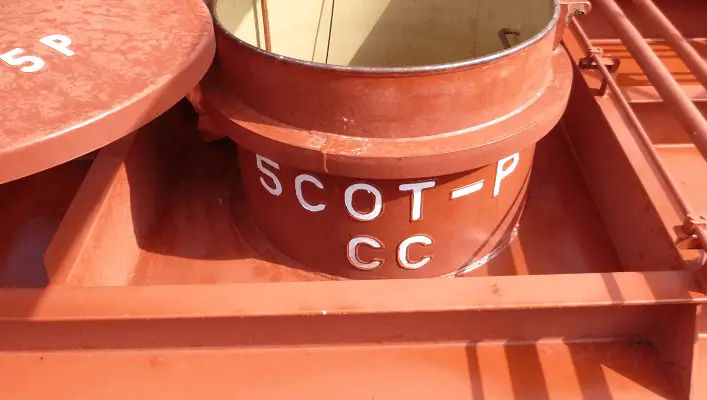Not all oil pollution is caused by tankers. However, the huge volume of crude oil transported by sea has created a major problem in disposing of dirty ballast and tank washings without harming the marine environment or damaging coastal amenities. Most crude oils contain wax and other materials in solution, together with sediments, which may settle out during the voyage and form a residue with any cargo remaining after discharge (of the order of 0.2 to 0.5 per cent of the cargo carried). If discharged into the sea in heavy concentrations in the course of tank washing the residue will stay on the surface for a long time and cause pollution.
Hence, it must be kept on board and may be discharged at loading terminals where the necessary facilities arc available. If not, the residue must be retained and the new cargo loaded on top (LOT). In no circumstances may the residue be discharged into the sea unless the safety of the ship or its personnel is at hazard.
Objects of Load on Top
The essential purpose of the Load on Top system is the collection and settling on board of the water and oil mixtures resulting from ballasting and tank operations-usually in a special slop tank or tanks-and their subsequent disposal ashore at the discharge port.
When oil and water arc agitated together droplets of oil can enter the water and water can enter the oil. When oil droplets enter water they are generally well dispersed and will settle out, the rate depending upon the specific gravity of the oil and the size of the oil droplets. Tank washing and pumping of wash water and oil residues produce water droplets, which will enter the oil. Most crude oils contain emulsifying elements, which hinder the separation of water dispersed in the oil. The oil residues in the slop tank generally contain this type of water-in-oil emulsion, which is stable and long-lasting.
All tankers can perform Load on Top operations, which will enable them to meet the requirements of the 1954 Convention as amended in 1969. The 1969 amendments impose a total prohibition on the discharge of any oil or oily mixture from a tanker within 50 miles of any coast, and limit the How, concentration and quantity discharged anywhere else at sea.

the term ”load on top ”is used on many crude oil carries, is to provide a method for—–
a. calculating the ullage in the cargo tank.
d. loading ballast by gravity.
c. the loading of new cargo into a decanted slop tank as procedure to minimize pollution.
d. calculating the ratio of cargo expansion in cargo tank